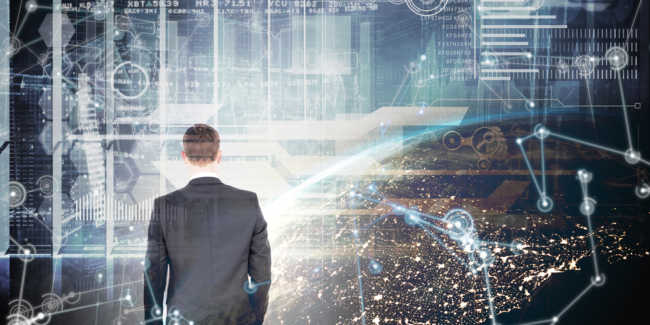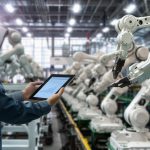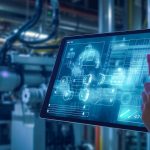Discovering Applications and Potential of The Internet of Things
We have entered a new era of scientific breakthroughs and technological applications that will change life as we know it. Accelerated technological development is transforming our civilization. The pace of innovation is growing so rapidly that it is becoming exponential as each year passes. Futurist Dr. Michio Kaku characterizes this blazing technological shift as moving from the “age of discovery” to the “age of mastery.”
This next decade beckons many new technological discoveries and applications. This includes genetic engineering and regeneration of body parts, new cures for diseases, artificial intelligence, augmented reality, nano-technologies, robotics, ultra-high speed trains and self-driving cars, renewable energies, sustainable agriculture, big data, 3-D Printing, digital security, quantum computing, mobility, and paper thin flexible personal computers.
If you read the MIT Technology Review on a weekly basis, you will be provide continual insights into the trends of disruptive transformation. It also important to know some key stats and terms … and implications of the Internet of Things (IoT):
Some Key IoT; Definitions/Stats:
- IoT refers to the general idea of things that are readable, recognizable, locatable, addressable, and/or controllable via the Internet.
- Physical objects communicating with each other.
- People, data, things (machine to machine, machine to people) .
- According to Gartner there will be nearly 26 billion networked devices on the Internet of Things by 2020.
- Cisco estimates that IoT will be valued at $4.6 Trillion for the Public Sector in the next ten years
- 604 million users of wearable biometrics in 2019 according to Goode Intelligence
Aspects of The Internet of Things
IoT Key Components of IoT: Big Data (and data mining), Sensors (RFID, chips, transistors, Analytics (predictive).
IoT Product and Service Applications: Improving government services. Better efficiencies and performance via BPO. Smart solutions under budget constraints. scalability; BPO can more rapidly adapt and manage customer service for the exponential growth and magnitude of IoT, risk mitigation. Management/integration. Compliance. Data integrity. Consumer facing digital government and responding to public need.
IoT Areas of focus: facilities & infrastructure management, industrial IoT applications, energy (smart grid) , medical & healthcare, transportation, building/construction (smart buildings), environment (waste management), water resources, retail and supply chain, communications, and education (learning analytics). Check our useful resources about the state of automotive, industrial & medical electronics manufacturing.
IoT Technology Trends: automation, robotics, enabling nanotechnologies, self-assembling materials, artificial intelligence (human/computer interface), 3D Printing Photovoltaics and printed electronics), wearables (flexible electronics) real-time analytics and predictive analytics, super-computing (faster and more connectivity), increased storage and data memory power, wireless networks, secure cloud computing, virtualization.
IoT Policy Issues: ethics, interoperability protocols, cybersecurity, privacy/ surveillance, complex autonomous systems, best commercial practices.
IoT Benefits: logistics and situational awareness by monitoring data, i.e. traffic jams, parking management, and distributed traffic control. Energy use (utilities). Productivity; manufacturing, logistics, telework. Healthcare; connected devices (wearables) patient monitoring vital body signs with remote monitoring capabilities. Emergency management; i.e. weather incidents, crow control. Security: cameras, sensors, forensics.
IoT Areas of Impact:
Health & Medicine
- Health- Implantable devices, bionic eyes, DNA nanomedicines
- Genomic techniques – gene therapy (Gene therapy to enhance strength, endurance and lifespan Gene therapy to enhance human intelligence)
- Remote sensing tech
- Medicine for longevity, enhancement
- Real-time biomarker tracking and monitoring
- Artificially grown organs Human regeneration (regrow lost limbs in months)
- Life expectancy doubles
- Human cells interfaced with nanotech MNT repair of physical trauma, almost no deaths once injured and then get MNT treatment (EMT or hospital) MNT repair of cellular damage MNT able to replace various organs MNT able to enhance body functions, Cybernetics
- Exoskeletons for mobility
Transportation:
- Sustainability of infrastructure
- Converged transportation ecosystems and monitoring
- Autonomous and connected cars
- Predictive analytics(parking, traffic patterns)
Energy:
- Solar power
- Waste to biofuels
- Protecting the Grid
- Batteries (long lasting)
Law Enforcement and Public Safety:
- Surveillance (chemical and bio sensors, cameras, drones)
- Forensics
- Interoperable communications
- Security screening by bio-signature: Every aspect of your physiology can be used as a bio-signature. Measure unique heart/pulse rates, electrocardiogram sensor, blood oximetry, skin temperature. More about Powering the Trillion Sensor Industrial Internet of Things Dream
Finance:
- Mobile payments
- Mobile banking
- Identity management
- Biometric Security: access control facial recognition, voice recognition, iris and retina scanners, fingerprint sensors on tablets and smartphones – pass keys
Agriculture:
- Aqua farming
- Water purification
- New food manufacturing and production tech
- Food security
As tech and connectivity continues to evolve and expand, the many potentials of The Internet of Things will also grow. There is much we will soon discover. Find more about the impact of iot in manufacturing industry.
![]() This article was written by Chuck Brooks. He is the Principal Market Growth Strategist for General Dynamics Mission Systems for Cybersecurity Systems. He is also Adjunct Faculty in the graduate Applied Intelligence Program and Graduate Cybersecurity Program at Georgetown University.
This article was written by Chuck Brooks. He is the Principal Market Growth Strategist for General Dynamics Mission Systems for Cybersecurity Systems. He is also Adjunct Faculty in the graduate Applied Intelligence Program and Graduate Cybersecurity Program at Georgetown University.



